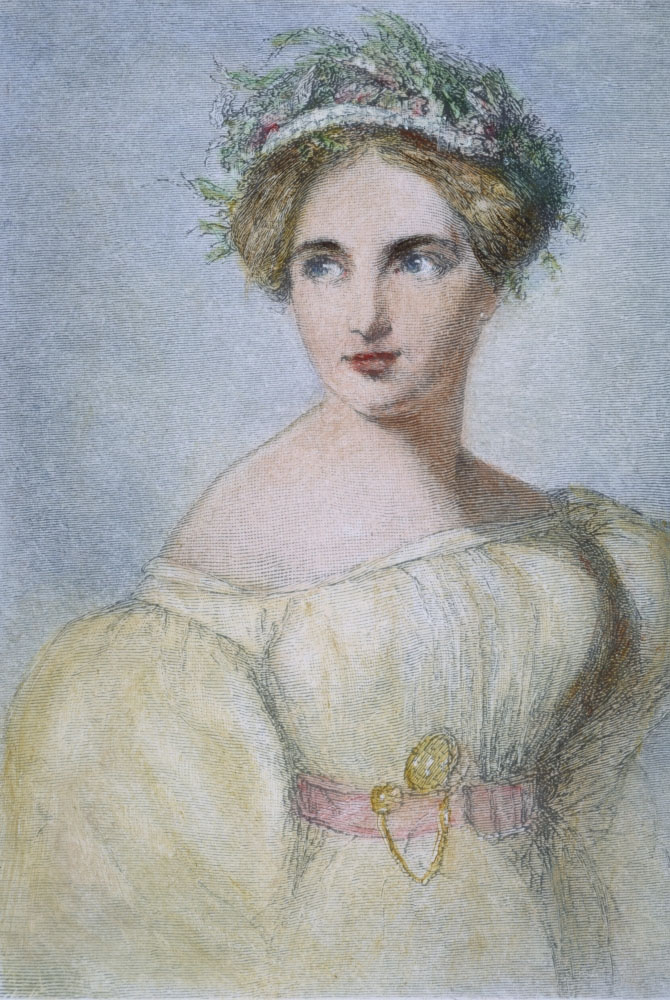
MORE THAN AN ORNAMENT
Fanny Mendelssohn Hensel’s G minor Piano Sonata comes to orchestral life
Virtuoso pianist and composer Fanny Mendelssohn Hensel, as a woman in the Romantic era, had considerably fewer opportunities to write large-scale pieces than her younger brother, Felix. Though prolific (460 compositions before her death at age 41), Hensel’s output was smaller in scale by necessity, as she was discouraged from having a public music career. She faced skepticism even within her own family. Her father once wrote to her that “Music will perhaps become Felix’s profession. For you it can and must be only an ornament.”
Even within the strictures of chamber composition, many of Mendelssohn Hensel’s works, notably the Piano Sonata in G Minor (1843), carry within them suggestions of what those unwritten symphonic pieces might have been. This sonata features a wealth of deliberate orchestral writing and similarities to Felix’s Piano Concerto in G Minor that are striking in light of the siblings' close collaboration and frequent exchange of musical ideas.
The idea of honoring Mendelssohn Hensel by turning her sonata into a concerto came about as a collaboration between composer Patricia Wallinga and pianist Sharon Su. This project celebrates Hensel’s brilliance and resilience, by giving her a concerto in the classical canon 175 years after her death. It also calls attention to how women and marginalized people have always composed, even in environments where they were disempowered and their talents dismissed.
BRAI commissioned Patricia Wallinga to make an orchestral arrangement of Fanny's sonata, and presented the first performance of the composition on June 15, 2023 at Congregation Kehillath Israel (Brookline, MA). A chamber orchestra of 26, under the baton Britmey Alcine and with Sharon Su as soloist played the 26 minute Concerto. You can watch a trailer of the performance here>.
JOIN THE CONSORTIUM
Tier 1: Exclusive Premiere
Ensembles have exclusive premiere rights for their region (USA) or country. Tier 1 ensembles ensure exclusivity in their area; other groups in their region will only be able to sign on as Tier 2 co-commissioners.
Ensembles receive score & parts in in Jan 2024 or as soon as they commit
Exclusive performance rights from Jan 1, 2024 to Dec 31, 2024
Ensembles are listed prominently in future published editions of the work
Tier 2: Regional / Local Premiere
Ensembles secure regional or local premiere rights. Tier 2 ensembles ensure exclusivity in their local area or subregion. This tier is designed for regional orchestras and educational ensembles.
Ensembles receive score & parts in Sep 2024
Performance rights from Jan 1, 2025 to Dec 31, 2025
Ensembles listed in future published editions, below Tier 1 co-commissioners
Requests to join consortium accepted on a rolling basis. Cut-off dates are:
Tier 1: Aug 31, 2024
Tier 2: Aug 31, 2025
KEY DETAILS
Instrumentation
chamber orchestra (2/2/2/2, 2/2/0/0, timpani, strings) + piano soloist
Premiere soloist Sharon Su is available for future engagements.
Movements
4 attacca movements (ca. 22 mins)
To join or for more information, contact consortium coordinator Andrés Ballesteros: fmhconsortium (at) gmail (dot) com
PROGRAMMIING SUGGESTIONS
German Romanticism
highlighting the era in which the Mendelssohns lived and worked
Mayer’s Overture to Faust, Op. 46
Brahms’ Symphony No. D in D major
A Celebration of Pianist-Composers
Carreño’s Serenade for Strings
Liszt’s Les prèludes
Ellington’s River Suite
All-Mendelssohn Program
featuring music by both Fanny and her brother Felix:
Fanny’s Overture in C Major
Felix’s Piano Concerto No. 1
Felix’s Italian Symphony
Engaging with History
honoring the Mendelssohns' long engagement with historical music, especially J. S. Bach:
J. S. Bach’s Orchestral Suites or Brandenburg Concerti
Shaw’s Punctum or Watermark
Vaughan Williams’ Fantasia on a theme by Thomas Tallis
Montgomery’s Banner
From Keyboard to Orchestra
featuring orchestrations of pieces originally written for keyboard:
Ravel's adaptation of Mussorgsky's Pictures at an Exhibition
Stokowski’s transcription of J. S. Bach’s Toccata and Fugue in D minor
Still’s orchestrations of Price’s Dances in the Canebreaks
Lomon’s arrangement of Clarke’s Viola Sonata
Other potential pairings
Gershwin’s Rhapsody in Blue; both works will exist in a solo version and a piano concerto version
Ngwenyama’s Primal Message for string orchestra; a modern work with a lushness reminiscent of Romantic Era music
Schubert’s Death and Maiden for string orchestra, another piece that was performed in German salons
Learn more
Patricia Wallinga, composer
San Francisco-based composer and mezzo-soprano Patricia Wallinga is known for her intricate, charismatic music.Wallinga engages with traditions from literature, dance, theater, and folk music alongside influences from the classical canon. Her work has earned praise as “powerful” (Bloomington Herald-Times) and “damn brilliant” (conductor and composer Eric Whitacre), Wallinga Her accolades include the American Prize, the BMI Student Composer Award, and a fellowship at the Gabriela Lena Frank Creative Academy of Music. Originally from Naperville, Illinois, Wallinga holds degrees from Indiana University and SF Conservatory of Music.
Sharon Su, pianist
Sharon Su is a pianist and music writer known for performing, recording, and premiering a wide-ranging repertoire of historical and contemporary composers. Music critic Anne Midgette has called her writing “illuminating,” and Su's recent features include the LA Times, SF Chronicle, and VAN Magazine. Her recordings of works by Clara Schumann, Cécile Chaminade, and Louise Farrenc have received praise and been featured on classical radio programming. Ms. Su studied with Yoshikazu Nagai, Gideon Rubin, Frank Wiens, Rex Cooper, and Marina Grudskaya. She has also been advised by celebrated concert artists Joanne Polk, Ian Jones, Inna Faliks, Stephen Spooner, Chun-Chieh Yen, Hong Xu, Enrico Elisi, James Giles, and Luiz de Moura Castro.
|
 
 

|

